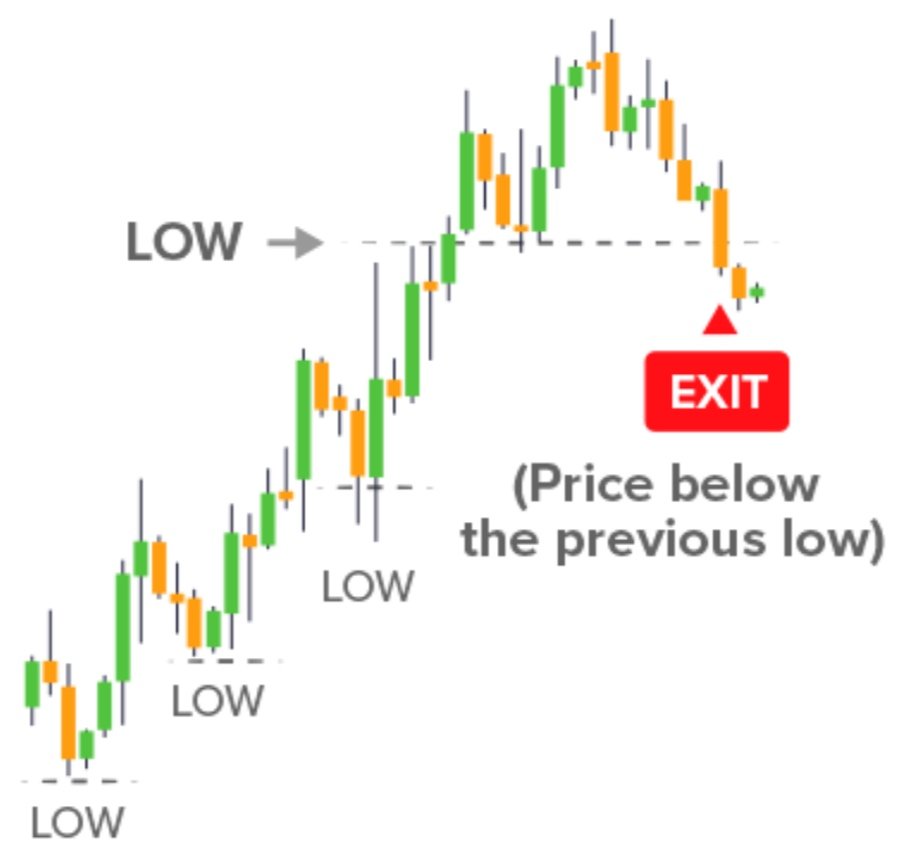How to Catch More of a Stock's Move
For day traders and swing traders, mastering the art of trailing out of a position can be the difference between a decent profit and a massive win. Trailing your position effectively allows you to ride the momentum of a stock's move, maximizing your gains while minimizing the risk of giving back profits. In this guide, we'll delve straight into the essential techniques to catch more of a stock's move through strategic exits.
Using a Moving Average to Trail the Position
If price tends to respect the 20MA, then place your stop below the 20MA
A moving average is a versatile tool that can help you stay in a trade longer while safeguarding your profits. The concept is simple: as the stock price rises, trail your stop loss order just below a specific moving average, such as the 20-day or 50-day MA. This works best on the daily chart for swing trading, but I have seen it used with great success on the intraday charts as well (using a faster moving average like the 9 period). This technique lets you benefit from the stock's upward trend while providing a clear threshold for when to exit if the trend reverses. By using a moving average as your trailing stop, you ensure that your exit adapts to the stock's changing price dynamics.
Using Market Structure to Trail the Position
Market structure is an objective way to trail out of a winning position
The market's structure, characterized by key support and resistance levels, can guide your exit strategy. If you’re unfamiliar with market structure, read our write-up on the subject here. As the stock price advances, periodically adjust your stop loss order to rest just below significant support levels. Essentially, every time the stock makes a higher low within the trend, raise your trailing stop up to that higher low. This approach locks in gains while allowing for potential further upside. However, be vigilant – if the stock breaks a crucial support level, it may signal a trend reversal, prompting you to exit swiftly. Adapting your trailing stop to the market's structure lets you ride trends with precision and discipline. This is a particularly useful strategy when trading index products like SPY/ES or QQQ/NQ.
Using a Trend Line to Trail the Position
Trader’s Thinktank and Trading Mentorship Group members alike will know that I am not a huge fan of trend lines, but that is a discussion for another time. For trailing out of winning trades, drawing a trend line along a stock's price action can serve as a dynamic trailing exit strategy. As the trend line advances with the stock's climb, adjust your stop loss order just beneath it. Trend lines provide a visual representation of the stock's trajectory (rate of change), helping you stay in the trade during upward moves while maintaining a safety net against sudden reversals. This technique capitalizes on the stock's technical patterns while offering a straightforward approach to trailing your position.
In conclusion, mastering the art of trailing out of a stock position is a crucial skill for day traders and swing traders aiming to capture substantial trends. By employing moving averages, market structure, and trend lines as trailing stops, you can enhance your ability to catch more of a stock's move. Remember, the key is adaptability – continuously adjust your trailing stop to the stock's changing behavior. With these techniques in your trading arsenal, you'll be better equipped to ride massive trends and secure your hard-earned profits.



